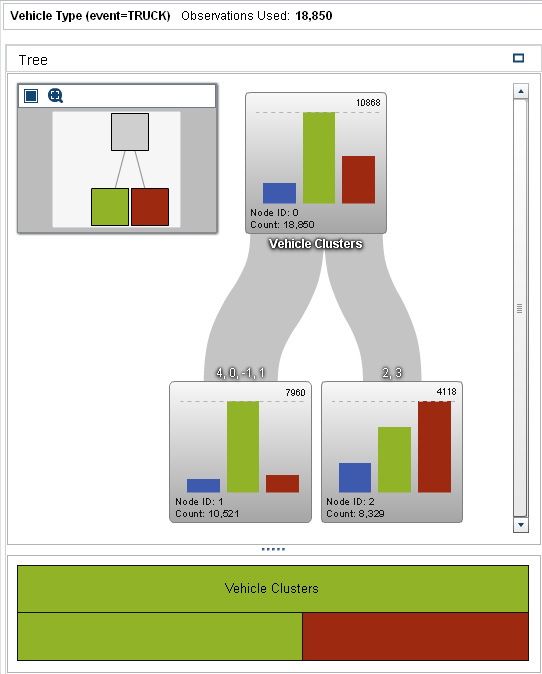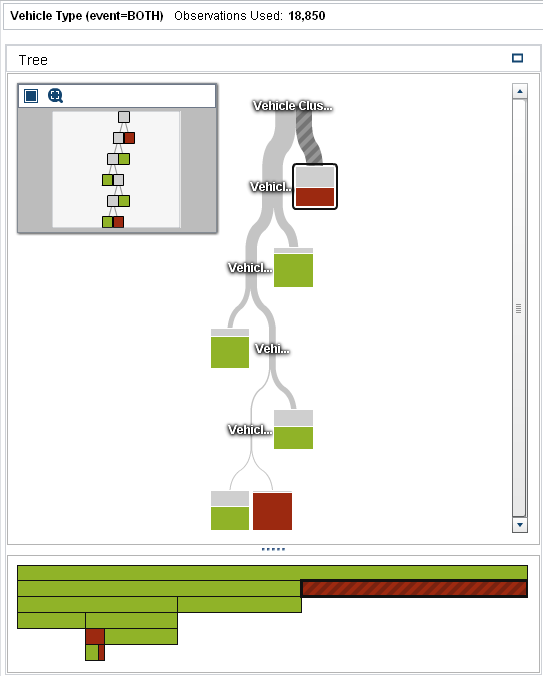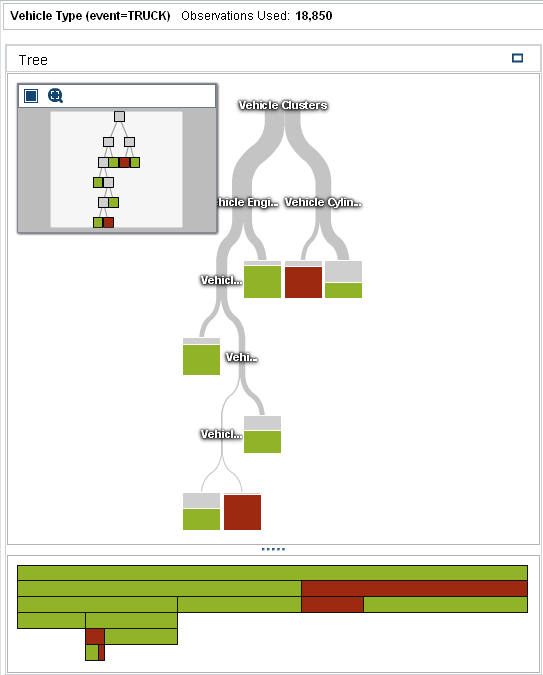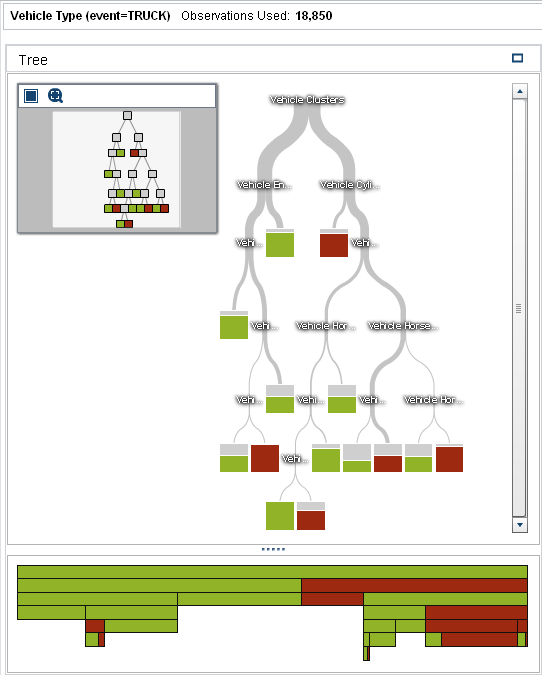Create a Decision Tree
A decision tree creates
a hierarchical segmentation of the input data based on a series of
rules applied to each observation. Each rule assigns an observation
to a segment based on the value of one effect. Rules are applied sequentially,
which results in a hierarchy of segments within segments.
To create the decision
tree for this example, complete the following steps:
-
Select Show diagnostic plots. In the Assessment window, select the Misclassification plot. Observe this plot as you make changes to the decision tree to see how well your model classifies the data.Enabling this property ensures that the smallest possible decision tree is created when you add predictors to the tree. In the following steps, you add a variety of predictors to the tree and interactively train the tree.
-
Select the leaf node that contains vehicle clusters 4, 0, -1, and 1. Right-click on this node, and select Train. The Train Decision Tree window appears.The variable Vehicle EnglineSize (l) is automatically selected for training because it has the greatest log worth of all the variables. Maximum depth of subtree is set to 6, which indicates that up to six additional levels can be added to the current decision tree. Click OK.
-
Select the node that contains only vehicle clusters 2 and 3. Right-click on this node, and select Train. The Train Decision Tree window appears.The variables Vehicle EngineSize (l), Vehicle Clusters, and Vehicle Cylinders all have an equal log worth. Select Vehicle Cylinders, and click OK.Only one additional level is added to the decision tree. Check the Misclassification plot in the Assessment window to confirm that the number of misclassifications decreased.
-
Repeat the training for node 12, which is the node that contains vehicle clusters 2 and 3 and in which vehicle cylinders is less than 6.1. Right-click on this node, and select Train. Vehicle Horsepower has the greatest log worth, so select it, and click OK.Zoom out to view the full tree. Your final decision tree should resemble the following image:
Copyright © SAS Institute Inc. All rights reserved.





